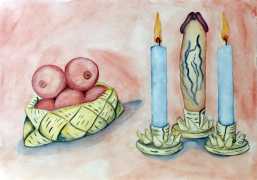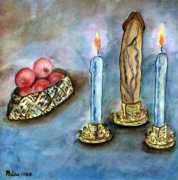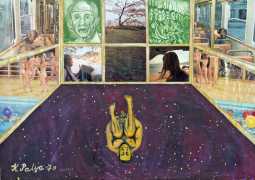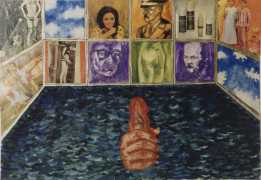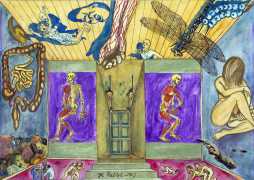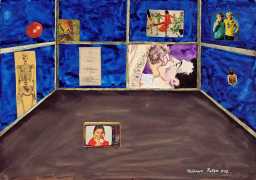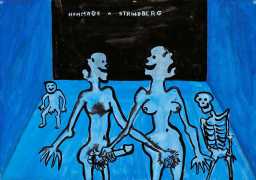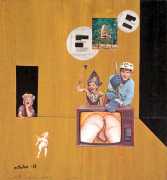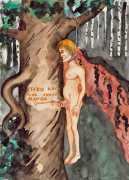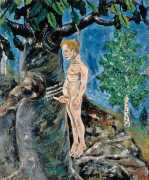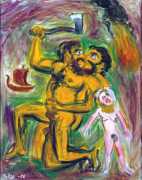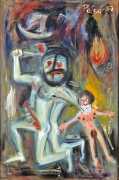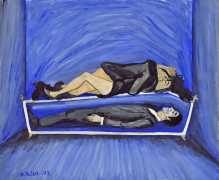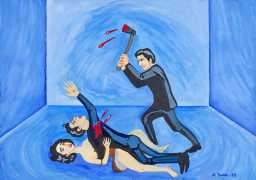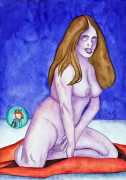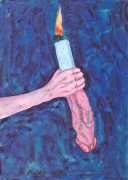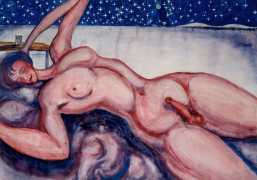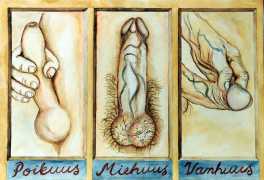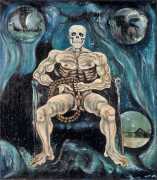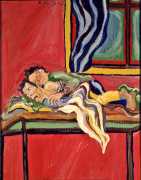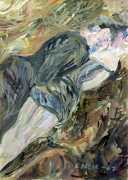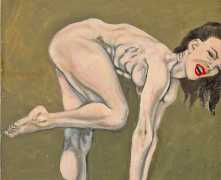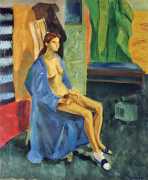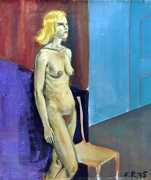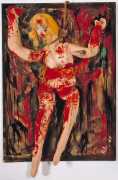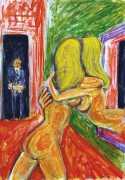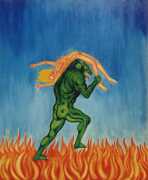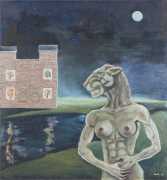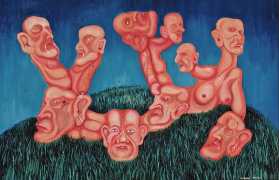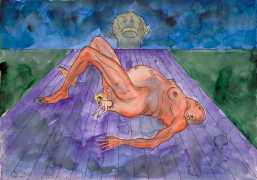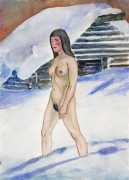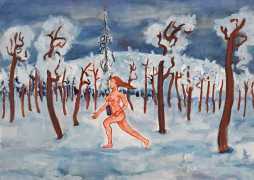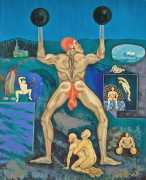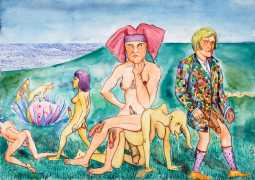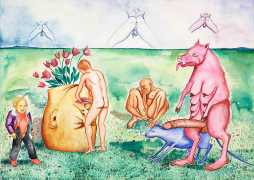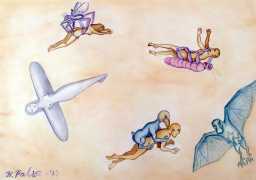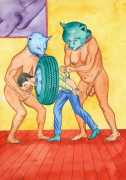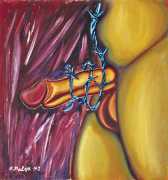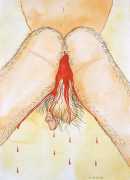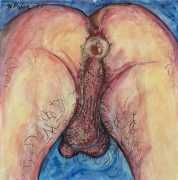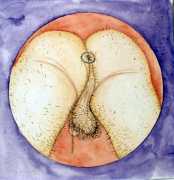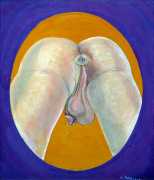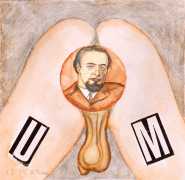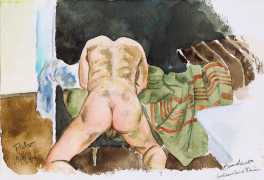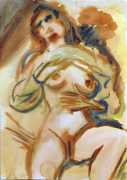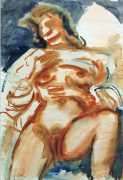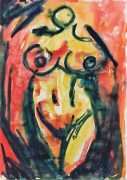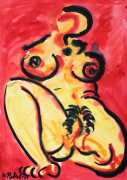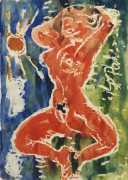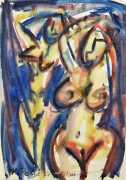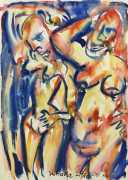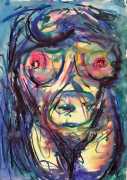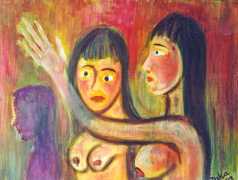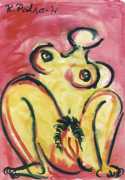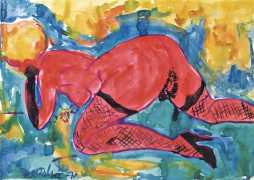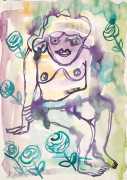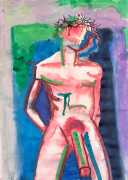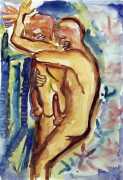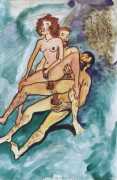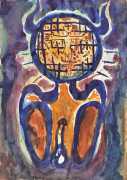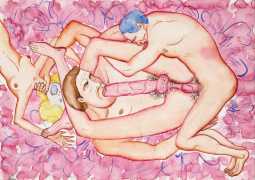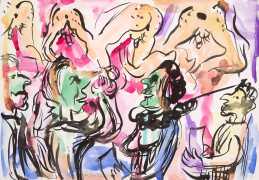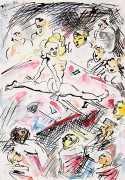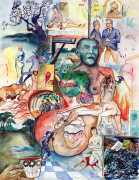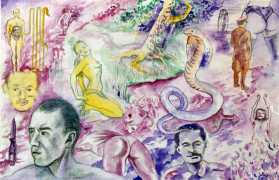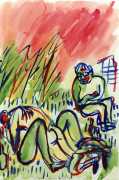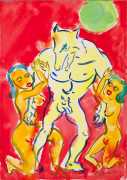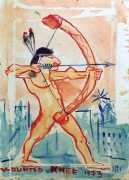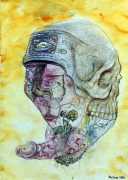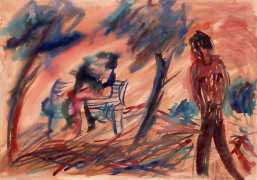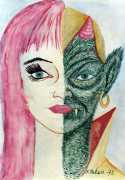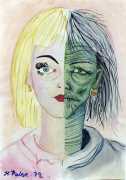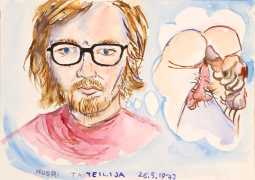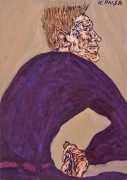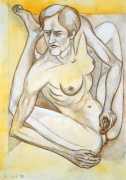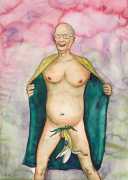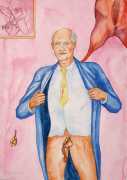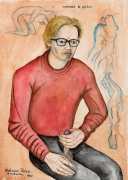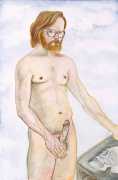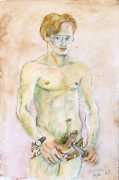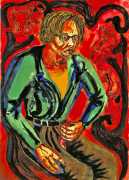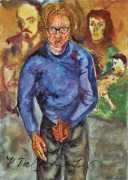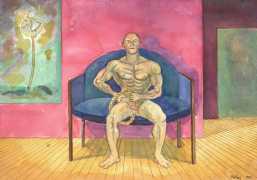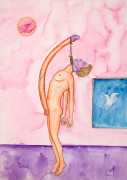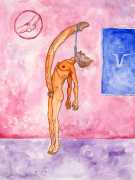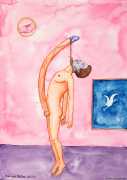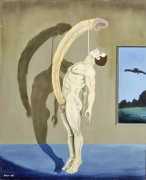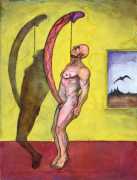 Huugo Kalervo ‘Kalle’ Palsa was born and lived most of his life in the village of Kittilä in northern Finland. As a teenager he avidly read classic literature, philosophy and art books, and in 1962 started recording events and thoughts in his diary. These were published posthumously in 1990 as Kalervo Palsan Päiväkirjat (Kalervo Palsa’s Diaries).
Huugo Kalervo ‘Kalle’ Palsa was born and lived most of his life in the village of Kittilä in northern Finland. As a teenager he avidly read classic literature, philosophy and art books, and in 1962 started recording events and thoughts in his diary. These were published posthumously in 1990 as Kalervo Palsan Päiväkirjat (Kalervo Palsa’s Diaries).
In 1967, painting pictures started to become an increasingly conscious activity alongside his writing. Palsa’s trademark raw artistic imagery and symbolism were born, and his works were exhibited for the first time at the annual exhibition of Lapland art in Rovaniemi. He studied visual arts in Helsinki at different times between 1969 and 1978, and travelled to the USA, but always returned to his modest cottage in Kittilä.
In the early 1970s Palsa told his artist friend Kyösti Kaukonen that he wanted to be the darkest painter in Europe, and he acknowledged that he was addicted to alcoholism and sexual experimentation. Death is a central theme in many of his works, and many were seen as pornographic. In 1973 Palsa’s works had to be hidden from the Academy of Fine Arts when its president visited an exhibition in Lapland. As his favourite pastime, ‘besides jerking off and painting’, Palsa typically explained to one interviewer that it was ‘peeing from a bridge, preferably in flowing water, upstream’.

In Palsa’s work the essence of art consists of the brutality of life, sexuality, and the presence of death. During his lifetime he painted more than a thousand paintings using a wide range of techniques. Palsa’s art was regularly labelled as pornographic trash, and it is only since his death that the appreciation and understanding of his art has been recognised.
In 1999 Palsa’s supporter and friend Maj-Lis Pitkänen, to whom Palsa had bequeathed his artwork, donated his collection to the Kiasma Museum of Contemporary Art in Helsinki, which includes approximately 3,000 drawings, sketches, paintings, graphics and sculptures. A selection of the works from the collection were shown at the Kiasma in a large exhibition in 2002 entitled ‘Kalervo Palsa: Another Coming’. In 2005 Pekka Lehto’s film Kalervo Palsa ja Kuriton Käsi (Kalervo Palsa and the Unruly Hand), a fictional film about Palsa, was made, though it was not shown until 2013.
We are very grateful to our Russian friend Yuri for introducing us to the work of this artist, and for supplying nearly all of the images.


